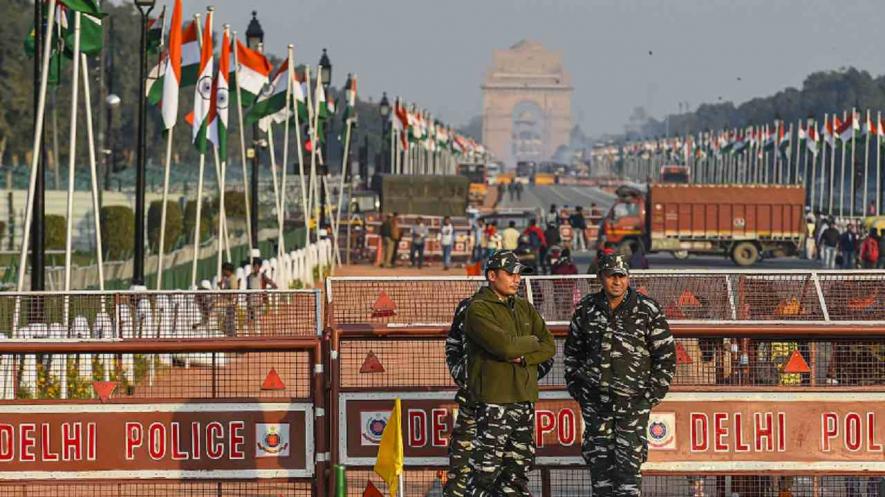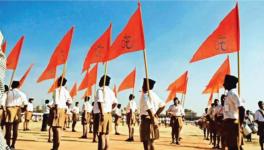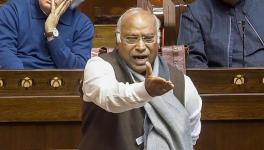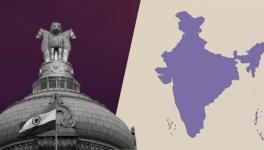Drowning Nation Clutches at Military Might?

Image for representational use only.Image Courtesy : Firstpost
On January 26, 2020, another Republic Day was observed in the country with much fanfare. This, however, was marked by a stark binary – the government’s official functions, and the people’s functions of resistance and that of reclaiming the Constitution with the ethos of a secular democratic republic.
I remember, in one of the Republic Day parades’ in Shimla, a senior bureaucrat of the Himachal government, seated next to me, had whispered in my ears, “This will be a relic of the past!” By ‘this’, he meant the military prowess and might that we exhibit every year on the Republic Day parade, invariably in all the state capitals in the country, including the central parade at the Rajpath, New Delhi. I did not want to disagree with him and nodded my head.
For, some of the nation-states—after prolonged fight and war amongst themselves—realised the futility and even de-commissioned their military. The Scandinavians and the Dutch, who fought for centuries together, have actually reduced their armies substantially. Today, to even imagine decommissioning our armies in the South Asian hemisphere, or here in India may sound blasphemous.
Also read: Military Budget: Ambition Amidst Resource Crunch
Republic Day has re-affirmed that our territorial integrity is very safe because we have a strong army commissioned. The sheer display of the defence forces is a reminder to that. So would our neighbours feel, who have been exhibiting in their own capacities.
Just a look at the defence expenditure of some of the South Asian States would prove the massive amount being spent on securing our region’s security. The Indian government has a budget of US $60.9 billion (Rs 4.31 lakh crore), Pakistan has a budget of $11.4 billion, Bangladesh- $3.87 billion and China has a defence budget of $177.61 billion. In such a scenario, any reduction in the militarisation by any of the neighbouring countries is not expected.
In the period from 2010 to 2018, China, India and Pakistan figured in the list of top 10 largest importers of arms and ammunition in the world. China spent US $1,566 million, India $1,539 million and Pakistan $777 million in the aforesaid period in buying arms. The major gains in this military expenditure are made by the developed nations who manufacture arms and then sell them to India and other neighbouring countries. The top five suppliers of arms to the world, including the countries of South Asia, are the US, UK, Germany, France and Russia. US exports 682,607 billion TIV (trend indicator values based on the known unit production costs of weapons and transfer of military resources), UK-141,385 billion TIV; Russia-140,057 billion TIV, France-122,558 billion TIV and Germany- 86,740 billion TIV.
The five top companies who manufacture arms and ammunition and supply it to the world are all US-based; these include Lockheed Martin, Boeing, Northrop Grumman, Raytheon and General Dynamics. These five companies together have an annual turnover of over US $180 billion.
Also watch: Defence Deal: India Caught in U.S. Strategic Grip
In such a scenario, where the strongest powers of the world sustain a major part of their economy through the manufacturing of arms and ammunition, to imagine a future in South Asia which is peaceful and steers more with dialogue is rather difficult. That, too, in a political situation where, in the neighbourhood as well as in India, the might of the military is conjoint with the political discourse, the situation is further going to worsen. The army commanders in India have openly been advocating war with neighbours. The situation is similar in the neighbourhood, where the intertwining of politics and military is strong.
On the 71st Republic Day, when the citizens are trying to reclaim what is ‘India’ and the material and spiritual aspect of the nation that was consolidated with the adoption of the Constitution, there are efforts to belittle this very Constitution by the ruling powers. Along with the material growth of India, that is witnessing a huge fall in the recent years – with a fall in GDP, fall in investments and high unemployment rate, the spiritual growth in India is also witnessing a massive fall in its ethos. The ethos of brotherhood, liberty, fraternity, secularism, etc.
Hence, in the given situation, where both the material and spiritual growth of the nation is facing decadence, one of the ways to exhibit its superiority is through military might. In such a situation, to expect what the bureaucrat whispered in my ears, “military prowess would be a relic of the past”, is not just too naïve but utterly utopian!
The author is former deputy mayor of Shimla. The views are personal.
Get the latest reports & analysis with people's perspective on Protests, movements & deep analytical videos, discussions of the current affairs in your Telegram app. Subscribe to NewsClick's Telegram channel & get Real-Time updates on stories, as they get published on our website.
























